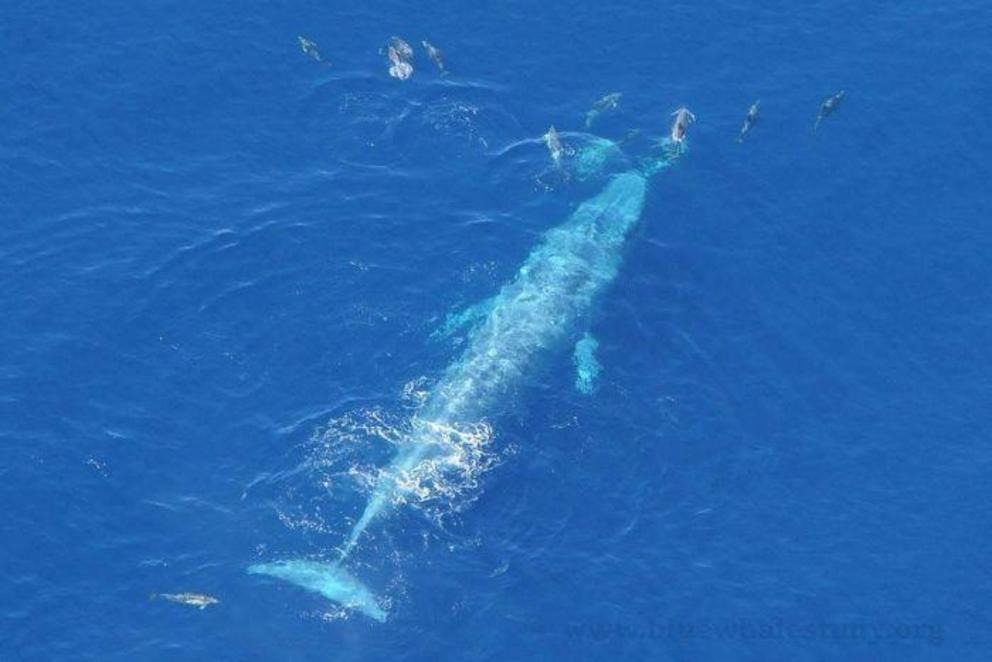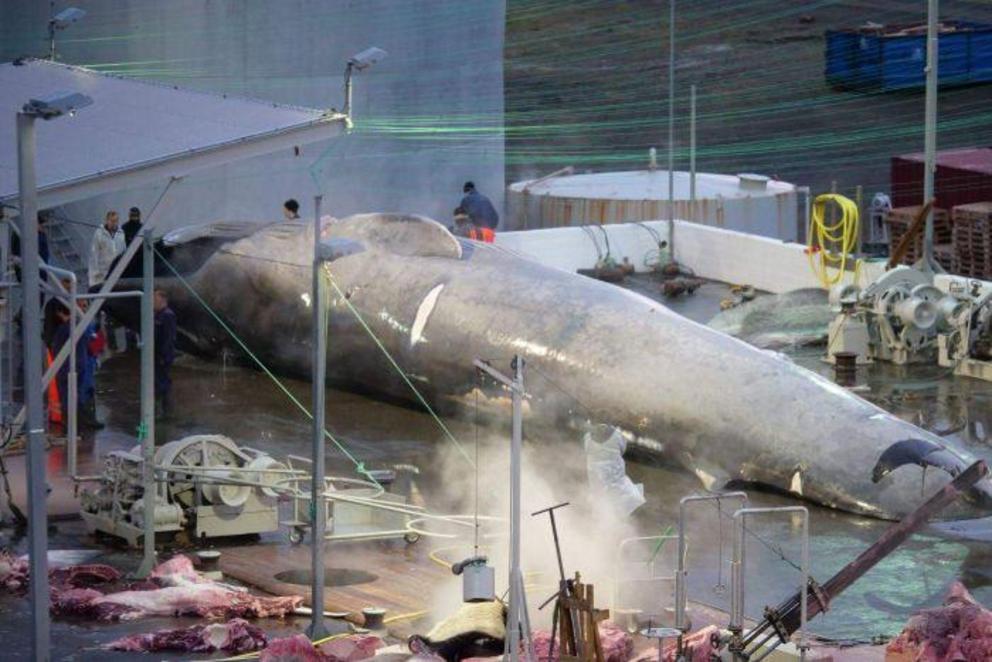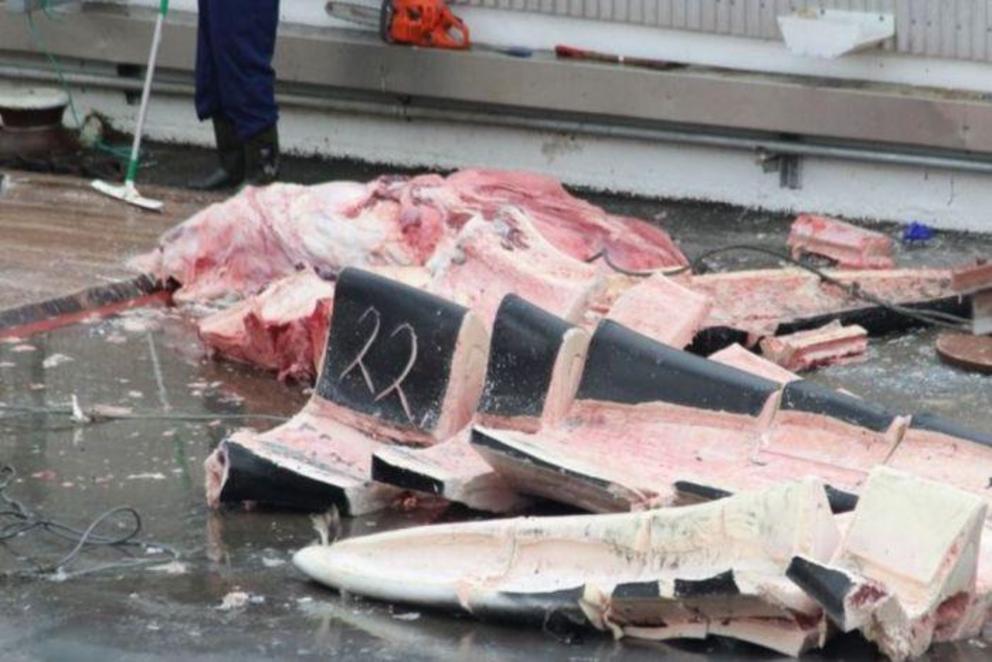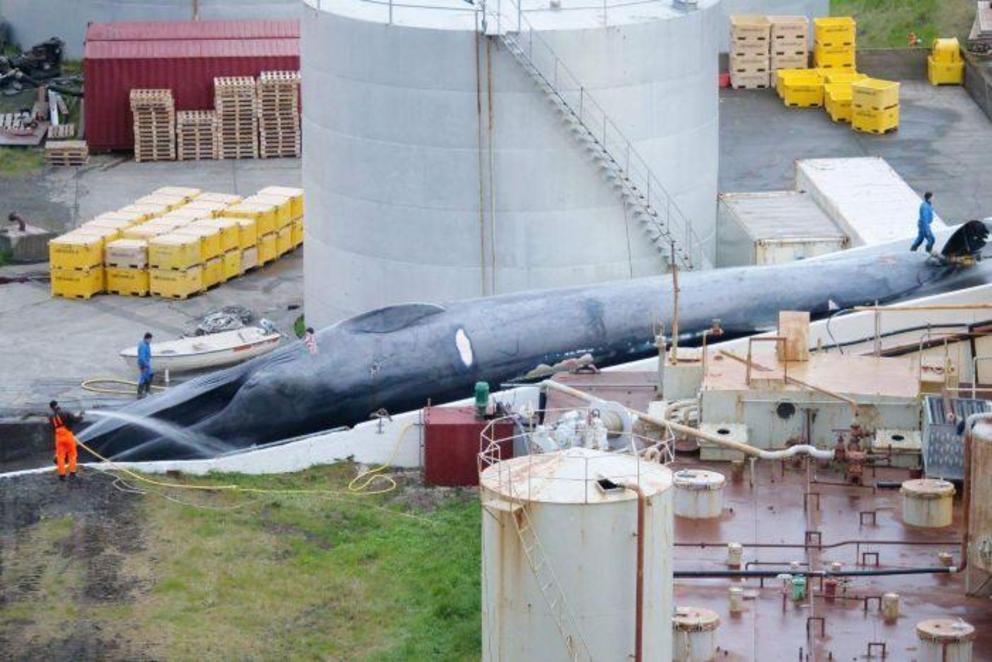DNA test shows slaughtered blue whale is a hybrid, Iceland marine institute says
An Iceland marine institute is claiming to have conducted a DNA test proving a suspected blue whale slaughtered earlier this month is an unprotected hybrid.
In a release last night, the Marine and Freshwater Research Institute stated that genetic testing confirms that "the whale in question that was caught on July 7th was a hybrid of a fin whale father and a blue whale mother".
The claim comes after an international group of marine scientists and whale experts wrote to the Icelandic Government on July 14, calling for whaling fleets in Iceland to be grounded until the identity of the whale was established.
While many anti-whaling activist groups and experts had identified the whale from photos as a blue whale, the CEO of the whaling company at the centre of the controversy, Kristjan Loftsson, last week told the ABC he was sure it was a hybrid.
"I've seen some of the other hybrids we've had in the past, and this looked like [those]," he said.
"When you see the animal in the ocean, and you look at it for a long time, it's really impossible that this is a blue whale."
But anti-whaling group Hard to Port, who initially brought the slaughtered whale to public attention, have cast doubt on the DNA test results, accusing the institute of being "Loftsson-friendly".
"Any other announcement would have most likely resulted in an end of the 2018 hunting season and would have jeopardised the future of Kristjan Loftsson's business," they posted to their Facebook page.
 Blue whales have been internationally protected since 1966.
Blue whales have been internationally protected since 1966.
Numerous experts, including Dr Peter Gill from The Blue Whale Study, confirmed at the time that the whale was most likely a blue, with an outside chance of it being a hybrid.
"If it was me looking at that whale from a boat I'd have thought that there's a really strong possibility that's a blue whale, let's leave it alone," he said.
Blue whales are dark under the belly, their baleen (their filter "teeth") is black and the shape and size of their dorsal fin is also used to identify them. These features set them apart from the fin whale.
Hybrids may take different features, but they're extremely rare.
The experts the ABC spoke to said this whale had no features that would identify it as a fin whale.
What is a hybrid and why does it matter?
A hybrid whale is the offspring of parents of two different species. In this case it is suggested that the whale was a mix of a fin whale father and blue whale mother.
Although hybrids are extremely rare, five have been killed in Iceland since 1983.
Despite hybrids being infertile in many animal species, a female hybrid blue-fin whale caught in Iceland in 1986 was found to be pregnant, according to research in the Journal of Heredity.
But the key distinction between blue whales and hybrids is that blue whales are protected, even in Iceland, whereas hybrids are not.
Mr Loftsson's whaling company Hvalur hf is licensed to kill 161 fin whales this year, and hybrids are included in that quota.
 Kristjan Loftsson's company is licensed to kill 161 fin whales this year.
Kristjan Loftsson's company is licensed to kill 161 fin whales this year.
But Dr Gill said killing hybrids because of a legal loophole was poor practice.
"Hybrids are so rare that that makes them special in their own way," he said.
"They're claiming it's a hybrid because they're not protected."
In their letter to the Icelandic Government, the international group of experts argue that hybrids have great value to research.
"Blue whale/fin whale hybrids are extremely important for scientific efforts to better understand different evolutionary and even ecological processes," they wrote.
"It is regrettable that over the last decades, at least four such hybrids have reportedly been killed in Icelandic whaling operations."
The killing of a blue whale could have had serious consequences for Iceland's whaling industry, which is already struggling against a wave of local opposition, according to Icelandic press.
What is the future of whaling in Iceland?
 The majority of Iceland's fin whale meat is exported to Japan.
The majority of Iceland's fin whale meat is exported to Japan.
Iceland's Prime Minister Katrin Jakobsdottir, who came to power in 2017, has publicly declared her own opposition to whaling.
And she seems to be in step with a growing movement of opinion in Iceland.
A poll this year found that support for whaling had dropped to 34 per cent in the country, with the rest either neutral or opposed to the practice.
That's down from 60 per cent support in 2013.
The domestic market for minke whale meat in Iceland is small and strongly driven by the tourism industry, while the majority of fin whale meat is exported to Japan.
In response to the suspected blue-whale killing this month, Ms Jakobsdottir declared her government would launch an investigation into the incident.
Iceland's whaling laws are up for review this year, and the Prime Minister has previously stated that she believes the law should not be renewed.
However, the Prime Minister's progressive party is in a coalition with right and centre-right wing parties that support the industry continuing.

